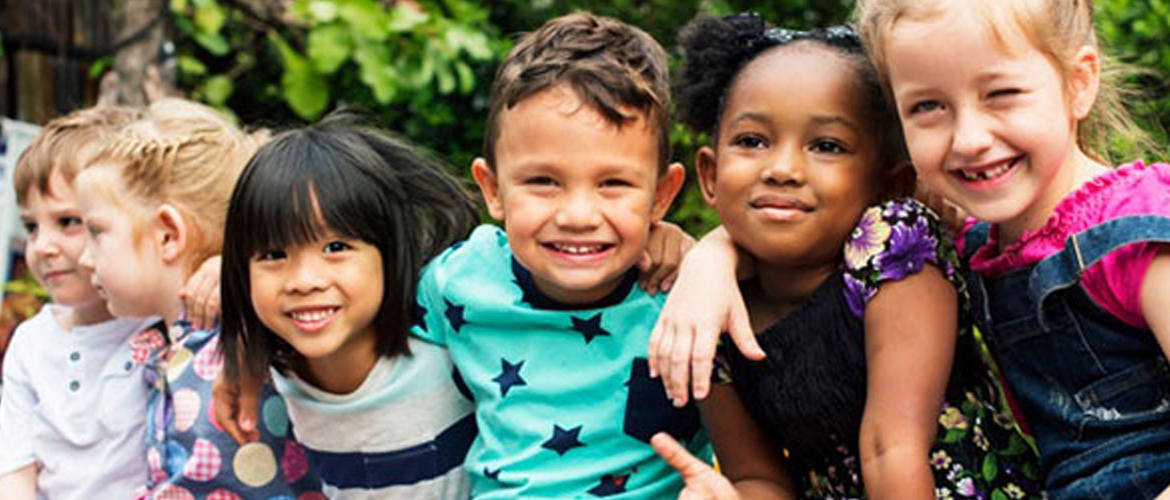
As children attend childcare and go to school, they’ll get to know peers with a wide variety of abilities, cultures, languages, and backgrounds. It’s totally natural for them to notice similarities and differences and express curiosity, and it’s up to the grownups in their lives to not only model acceptance of diversity, but to frame it as a strength.
Here are different ways you can show children that diversity is a strength:
Celebrate similarities and differences with charts and artwork. During discussions, point out how wonderful it is to have friends with similarities and differences, and how differences make each of us unique and special. Then, with the children’s help, create a chart or draw pictures of all the children’s different eye colors, hair colors/lengths, favorite foods, favorite stories, and/or family traditions and display it in the room for children to look at and reflect on it as they pass by it each time.
Help children verbally share the things that make them special. Build children’s cultural identity and boost self-esteem by giving them chances to share their strengths with others. Begin by talking with the children about how important it is to help other people feel good about themselves. Then provide the children with an opportunity to share interesting facts about themselves, their families, and their passions and talents.
Teach children it’s okay to ask questions. Sometimes, children are taught that asking questions is rude when it’s actually a great way to learn about differences. Rather than stigmatizing questions, show children how to ask them sensitively and appropriately.
Have open conversations about stereotypes and biases. The roots of biased viewpoints take hold when children are young. To reduce bias and support children’s development of compassion and understanding, explicitly tackle stereotypes and biases during the early years. In an increasingly diverse global society, it’s important to have conversations like these to reduce the likelihood that children will adopt biased, stereotypical viewpoints.
Express positive interest in diverse cultures. Show genuine interest and enthusiasm whenever young children share something about themselves, their values, or their culture. You might say things like, “Wow, that is so interesting!” “I am really glad to learn about that”.
Respect and empathize with all children. Regardless of their background or abilities, be sure to treat all children as competent, capable learners. When children experience challenges such as communication difficulties or demonstrate behaviors such as temper tantrums, use empathy to show the child you understand where they are coming from.
Set a good example. Stay mindful that they’re looking to you as a model and resolve to set a good example they can follow. Seeing you respond to diversity in a consistently supportive, empathetic way will teach children positive attitudes and effective strategies and will assure them that they can look to you for support.
Children will always be curious about where their friends are from, or why do their friends celebrate a particular holiday, etc. and it’s your role to teach children early on about respect and acceptance by modeling empathy and displaying enthusiasm for diversity every day. With support from you and the other adults in their lives, all young learners can help each other feel proud, accepted, and valued
